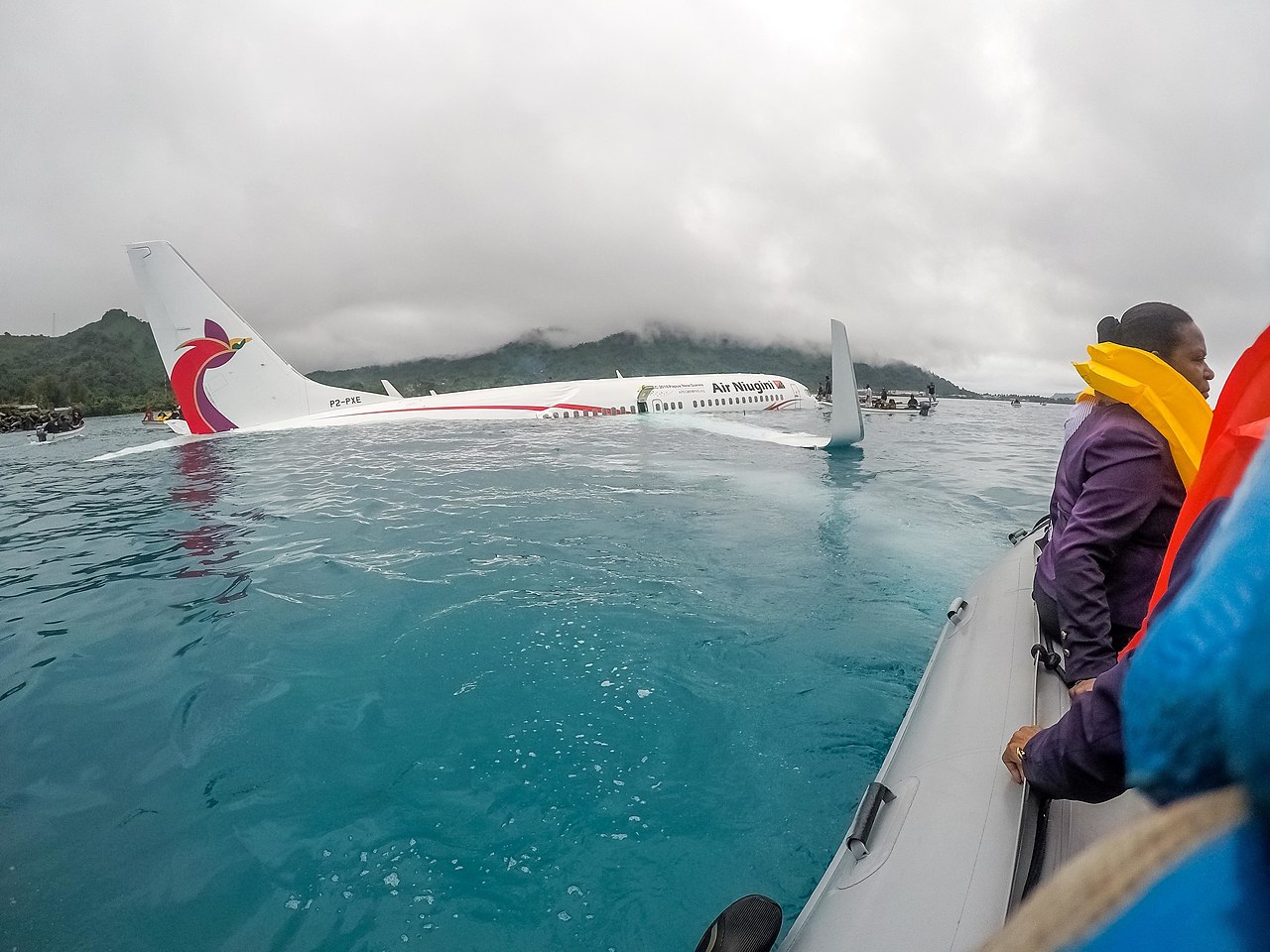
Air Niugini PX073, Chuuk, Federated States of Micronesia, 28 September 2018
An unexpected squall, a pilot who had not been route and aerodrome checked through hands-on flying, and a drift away from standard operating procedures combined to produce an impact with the waters of Chuuk Lagoon, 460 metres short of the runway threshold. A passenger was killed in the crash.
The Papua New Guinea Accident Investigation Commission’s report into the crash paints a picture of channelised attention by the pilot, a first officer unaware of the hazardous situation unfolding and loss of situational awareness on an approach that by 600 ft had become unstable in IMC. The crash was filmed by an engineer from the aircraft lessor, who was riding in the jump seat.
The report found, ‘The pilots’ actions and statements indicated that they had lost situational awareness from 625 ft on the approach and their attention had become channelised and fixated on completing the approach and landing the aircraft.’
It found the pilots failed to respond to 16 aural alerts from the enhanced ground proximity warning system (EGPWS), ‘pull up’ visual warnings at the bottom of the primary flight display, and indications from the PAPI (precision approach path indicator) that the aircraft’s approach angle was too high, choosing instead to continue the unstable approach.
The aircraft struck the waters of the lagoon and spun round so that initial reports said it had overrun the runway. It remained afloat long enough for nearby boats to converge and rescue all but one of the passengers and crew. The report uncovered some concerning aspects of the evacuation, however. Several passengers, one cabin crew member and the load master took cabin baggage with them, and ‘some passengers were annoyed that a cabin crew member prevented them from taking their bag.’
The missing passenger, an Indonesian man, was discovered, dead, three days later in the sunken fuselage of the aircraft.
A pathologist’s report concluded that the passenger had not been wearing a seat belt at the time of the impact and had suffered blunt force head injuries. The pathologist estimated the passenger had not drowned but died within three minutes of receiving the injuries.
The aircraft’s flight data recorder and cockpit voice recorder revealed the unstable approach before the crash had not been an isolated incident.
‘During the previous flight flown by the same pilots … the flightpath was significantly below the 3-deg flightpath (glideslope) thus prompting the EGPWS to issue 28 Glideslope aural alerts.
‘The pilots talked continuously about non-operational matters while the EGPWS alerts were sounding and they ignored the alerts. They did not take corrective action to bring the aircraft back onto the required flightpath to be considered a stabilised approach.’
The report recommended to avionic maker Honeywell that the EGPWS (enhanced ground proximity warning system) be upgraded to include a continuous ‘pull up’ aural and primary flight display warning to replace the ‘sink rate’ warning below 500 ft radio altitude. The recommendation remains open with discussions continuing with the US Federal Aviation Administration, National Transportation Safety Bureau (NTSB) and the manufacturer over this matter..
However NTSB staff involved in the investigation dismissed the recommendation for changes to the EGPWS alerting system.
‘NTSB staff disagrees that an additional warning would have been effective in alerting the crew,’ the NTSB team said.
The NTSB said the crew’s failures to respond to warnings, failure to follow correct procedures and lack of situational awareness ‘demonstrate that any additional guidance, alert, or warning would be similarly disregarded by the flight crew and ineffective in preventing the accident.’
The result was a needless death, and another piece of wreckage in the renowned ships’ graveyard of Chuuk, (formerly Truk) lagoon.
Flight Safety Australia: back in print
- Flight Safety Australia is available now by subscription from the CASA Online Store for $39.95 for four issues a year, delivered to your door in Australia.
- Subscribe by 25 August to receive the Spring 2019 issue. Subscribers after that date will receive the Summer issue as their first.
- The first 900 subscribers get the gift of a kneeboard, a multitool or a fuel drain (their choice, stocks permitting) with their subscription.
- Subscribe at shop.casa.gov.au


Comments are closed.